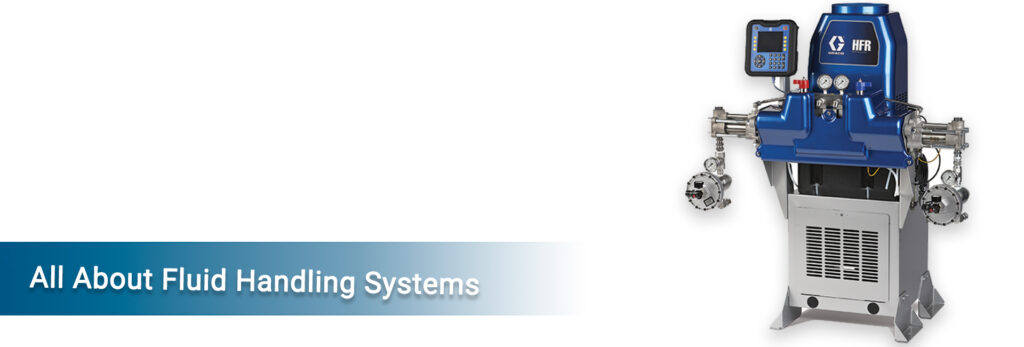These fluid handling systems are often a network of interconnected machines specifically designed to channel the velocity and power of a moving fluid to certain tasks like work, heat transfer, or the production of goods. Fluid handling systems are an integral part of manufacturing. Just having one isn’t enough. Like other parts of a factory, it needs to be designed well for efficiency. Making it work better can save time and product. Upgrading parts can make it last longer and work better. Good equipment means a higher level of productivity. The type of configuration, the choice of fluids, and the purpose for which the system is being used are some of the variables that may differ greatly depending on the intended application.
Introduction to Fluid Handling
Fluid handling in chemical production refers to the movement and manipulation of liquids or gases throughout the production process. This includes tasks like-
- Transferring raw materials into processing equipment
- Guiding materials through various stages of the operation
- Moving intermediate products between different steps
- Directing finished products to storage or packaging areas
The fluid handling systems manage a wide range of substances, from liquid chemicals to gaseous fluids. These are responsible for
- Process automation
- Liquids transfer
- Fluid-level management across the facility
Because these systems often encounter elevated pressures, their components need to be robustly built for durability.
Key Components of Fluid Handling Systems
A fluid handling equipment consists of various components, each serving a crucial role in ensuring efficient fluid movement throughout the system:
| Component | Description |
| Piping | Center of the network that transports the fluids. The material of pipes is selected based on factors like temperature and pressure to achieve the objective of longevity and safety. |
| Fittings | Responsible for establishing tight connections between pipes, thus delivering a near-zero leakage level. |
| Expansion Joints | Allow for the expansion or contraction of piping due to changes in temperature, thereby avoiding damage and maintaining the integrity of the system; Also function as vibration absorbers in high-temperature systems. |
| Pumps | Essential fluid systems components that maintain fluid flow by generating the necessary pressure to propel the fluid through the piping network. |
| Valves | Regulate the flow of fluids in the system by controlling when and how much fluid is being passed through. |
| Hose | Provides flexibility in fluid handling applications. These are made from materials like Plastic, Metal, PTFE, Composite, and Rubber. |
Types of Fluid Handling Systems
Understanding the function of different types of fluid processing systems is essential. Here are the four main types:
Simple Open Systems
This liquid handling system has a plain mechanism used primarily for product creation. The liquid comes in through one side, then travels through the circuit, and flows through many components before finally exiting. Also known as “transfer” circuits, they send liquid from one spot to another.
Simple Closed Systems
Supporting processes like air conditioning and heating, simple closed systems transfer fluid from one location through the system and back. Also called “loop” circuits, this fluid bed system maintains fluid within a closed circuit.
Open Systems with Multiple Circuits
Similar to simple open fluid flow systems but with multiple entry or exit points, these systems transfer fluid from multiple locations. They feature either multiple entrances or exits but not both.
Closed Systems with Multiple Circuits
Like simple closed liquid handling equipment, these continuously loop fluid but with multiple locations and circuit complexities. Supporting various facility locations, fluid remains within the system without exiting.
Advantages of Fluid Handling Systems
By investing in fluid grid systems, you gain control over the flow of liquid or gas within your facility. This enhanced control allows for greater management of the components involved in manufacturing, thereby improving your overall manufacturing system.
Reducing Wear
By redesigning fluid mechanical devices, such as pumps and valves, equipment failures due to wear and inefficiency generally decrease. Hence, less time will be lost on machine downtime, and output will increase.
Eliminating Issues Like Water Hammer
Well-designed fluid handling systems can prevent water hammer phenomena, further reducing the need for frequent repairs and stabilizing system performance.
Lowering Maintenance Costs
Modern liquid handling systems feature components designed to last longer, reducing maintenance requirements and downtime.
Improving Pumps With Better Bearings
Upgrading to modern pump bearings enhances pump efficiency and reduces maintenance costs, contributing to overall system performance.
Filtering for Longer Life
Installing filters in fluid handling systems helps prevent contamination and reduces maintenance time and costs by removing sediment from the liquid.
Reducing Product and Time Loss
Investing in a reliable fluid bed system minimizes downtime and increases worker productivity by reducing the risk of unexpected shutdowns and product losses from leaks.
Increasing Product Efficiency
Closed liquid handling equipment minimizes product waste and increases productivity by preventing spills and optimizing liquid extraction, enhancing overall product efficiency and worker effectiveness.
Conclusion
Patvin presents a complete portfolio of appropriate solutions for manufacturers interested in installing fluid handling systems. Their range of products includes everything needed to upgrade old fluid handling systems, starting with valve modifications and ending with expansion joints and fabricated pipes. With Patvin, clients can trust that they’ll find the components necessary to optimize their fluid handling processes and improve overall efficiency.
FAQs
Fluid processing or fluid flow systems refer to the infrastructure and equipment used in various industries to handle fluids for different purposes such as storing, transporting, heating, cooling, processing, mixing, and collecting finished products.
Fluid grid systems work through interconnected components that perform specific functionalities according to the needs of the industry wherein they are deployed. These systems form the base of the manufacturing process, product design, and service delivery, covering chemistry, food and beverage, pharmaceuticals, and energy production.
Fluid handling systems find applications across various industries, such as
- Food and beverage manufacturing
- Medical Industry
- Water and wastewater treatment facilities



